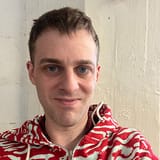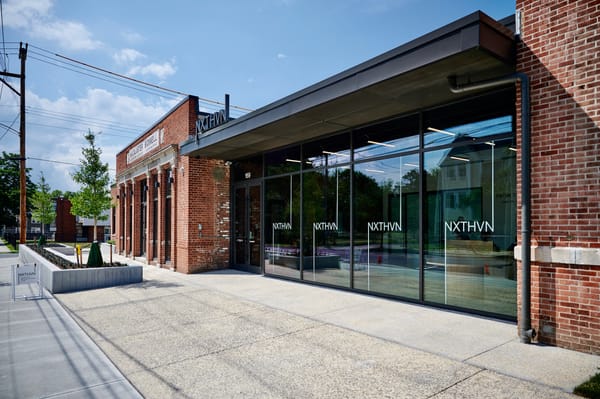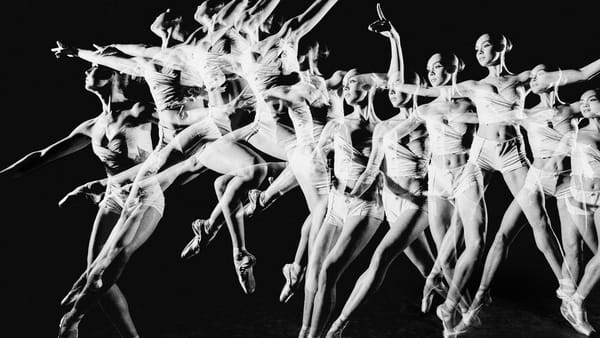How Proust Would Explore the West Village
Elastic City is shaking up the idea of walking, and it doesn't involve tours. One of the organization's recent art walks, titled "Favorites," was a saunter through the West Village led by writer Sarah Schulman, performance artist and director Niegel Smith, and Elastic City founder Todd Shalom.
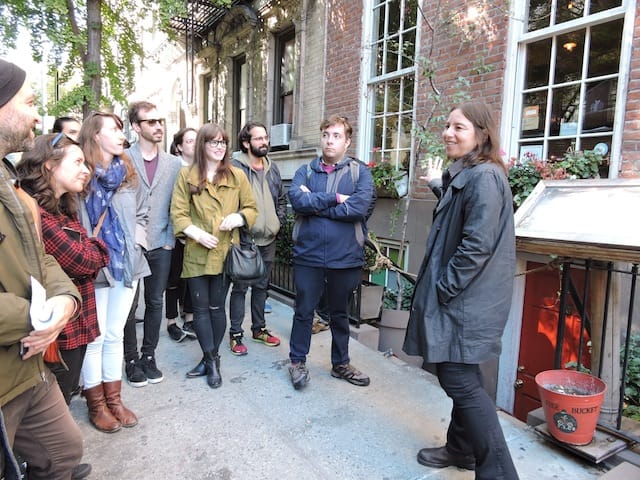
Elastic City is shaking up the idea of walking, and it doesn’t involve tours. One of the organization’s recent art walks, titled “Favorites,” was a saunter through the West Village led by writer Sarah Schulman, performance artist and director Niegel Smith, and Elastic City founder Todd Shalom. Melding oral history, queer theory, performance art, and guerrilla activism, the experience took on remembrances of things past with irreverent nonlinear aplomb. It struck me as how Proust would explore the neighborhood.
Many of the favorite spots of beatniks and bohemians that made the Village famous are now gone. That presents a challenge in telling their stories, which historical walking tours often face by fixating on what’s left and preserved. While it’s certainly intuitive to speak about a building that still stands, it makes a powerful point to gawk at a bar pouring double-digit cocktails and learn that the space was once a haven for hustlers.

At various points on our walk, the leaders would approach what appeared to be a random gay man on the street and start conversing with him. It would then become apparent that he’d been waiting for us, and that he had a story to share about his favorite spot in the Village. Mark McPherson recently found acceptance as a gay black teenager on the piers. Jim Fouratt was present at the famous 1969 Stonewall Riots and vividly described that first night, as well as other bars long gone that once defined the area. Sur Rodney Sur concluded the afternoon by telling the story of the controversial reception of the George Segal installation “Gay Liberation” (1992) in Christopher Park. Although Segal’s intention was to convey bandages and dressed wounds with his sculptures’ white, cloth-like skin, the all-white figures struck some as a mirror of the white privilege (then and still) festering in New York.
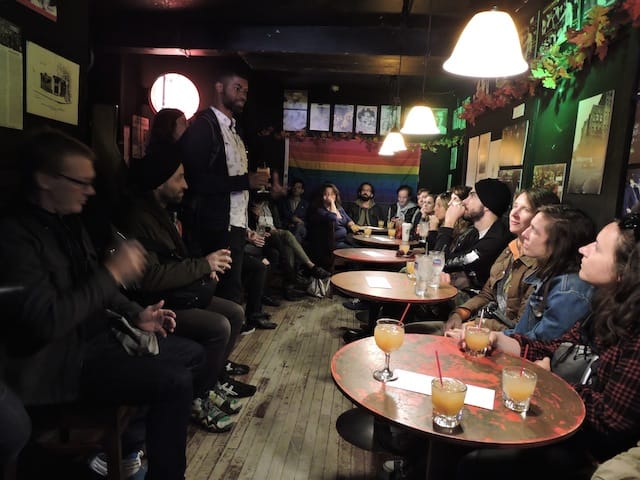
At other points, the walk became experiential and performative. The entire group gathered for a drink in the back room of New York’s oldest gay bar, Julius’. On one block, we were split into pairs to create performance art pieces reenacting how residents might leave their homes; it was a great reminder that every neighborhood is animated by the quirks of its residents. In yet another corner of the Village, we improvised a skit about gentrification by whispering lines into the ears of two chosen performers. Although some of the activities ran the risk of feeling hokey, these moments of on-the-fly theater succeeded in getting the group to synthesize what we were learning and turn it into a meaningful moment of performance.
There were also a few episodes of guerrilla activism. At one point, our leaders invited us to create bookmarks for a corporate bookstore that had replaced an independent one. Participants went singly into the shop and stashed the bookmarks inside publications for customers to encounter. I found a hipster magazine and slipped in this proverb: “To know and not to act is not to know,” which is a pithy variant on the prose of Neo-Confucian philosopher Wang Yangming (1472–1529).

The art historian within me died a little when a pair of incredible gargoyles on a stoop we stopped at went unmentioned. But the objective of “Favorites” was to reveal the favorite places of people in the Village who didn’t have guardians watching over them, who had to riot for their rights, who had to flee from home to the piers for acceptance. They had to become their own gargoyles.
“Favorites” by Sarah Schulman, Todd Shalom, and Niegel Smith took place on October 5 at 12pm. It was organized as part of the 2014 Elastic City Walks Festival, which ran from September 26 to October 7 and for which Hyperallergic was the media partner.

